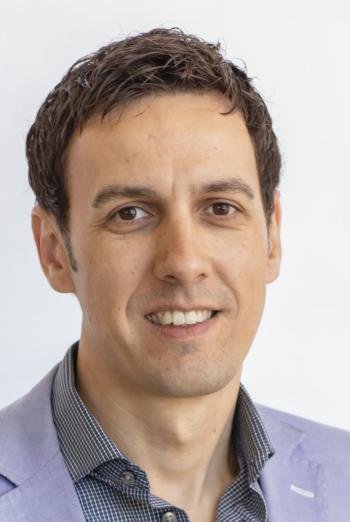Eric Pop
What Are 2D Materials Good For?
This talk will present my (biased) perspective of what two-dimensional (2D) materials could be good for. For example, they may be good for applications where their ultrathin nature and lack of dangling bonds give them distinct advantages, such as flexible electronics [1] or DNA-sorting nanopores [2]. They may not be good for applications where conventional materials work well, like transistors thicker than a few nanometers. I will focus on 2D materials for 3D heterogeneous integration of electronics, which presents significant advantages for energy-efficient computing [3]. In this context, 2D materials could be monolayer transistors with ultralow leakage [4] (taking advantage of larger band gaps than silicon), used as access devices for high-density memory [5]. Recent results from our group have shown monolayer transistors with record performance [6,7], which cannot be achieved with sub-nanometer thin conventional semiconductors, but are nevertheless thermally-limited [8]. I will also describe some less conventional applications, using 2D materials as good thermal insulators [9] and as thermal transistors [10]. These could enable control of heat in “thermal circuits” analogous with electrical circuits. Combined, these studies reveal fundamental limits and some unusual applications of 2D materials, which take advantage of their unique properties.
Refs: [1] A. Daus et al., Nature Elec. 4, 495 (2021). [2] J. Shim et al. Nanoscale 9, 14836
(2017). [3] M. Aly et al., Computer 48, 24 (2015). [4] C. Bailey et al., EMC (2019).
[5] A. Khan et al. Science 373, 1243 (2021). [6] C.
English et al., IEDM, Dec 2016. [7] C. McClellan et al. ACS Nano 15, 1587 (2021).
[8] A. Gabourie et al., J. Appl. Phys. 131, 195103 (2022). [9] S. Vaziri et al., Science
Adv. 5, eaax1325 (2019). [10] A. Sood et al. Nature Comm. 9, 4510 (2018).

Biography
Eric Pop is a Professor of Electrical Engineering (EE) and Materials Science & Engineering (by courtesy) at Stanford, where he leads the SystemX Heterogeneous Integration focus area and the EE Culture, Equity, and Inclusion committee. His research interests include nanoelectronics, data storage, and energy. Before Stanford, he spent several years on the faculty of UIUC, and in industry at Intel and IBM. He received his PhD in EE from Stanford and three degrees from MIT in EE and Physics. His awards include the PECASE from the White House, and Young Investigator Awards from the Navy, Air Force, NSF CAREER, and DARPA. He is an IEEE Fellow, an Editor of 2D Materials, and a Clarivate Highly Cited Researcher. In his spare time he enjoys snowboarding and tennis, and in a past life he was a college radio DJ at KZSU 90.1. More information about the Pop Lab and on Twitter @profericpop.